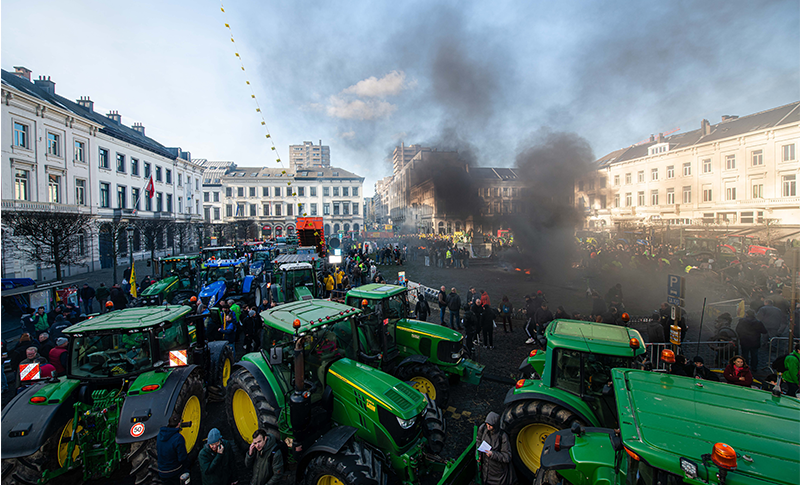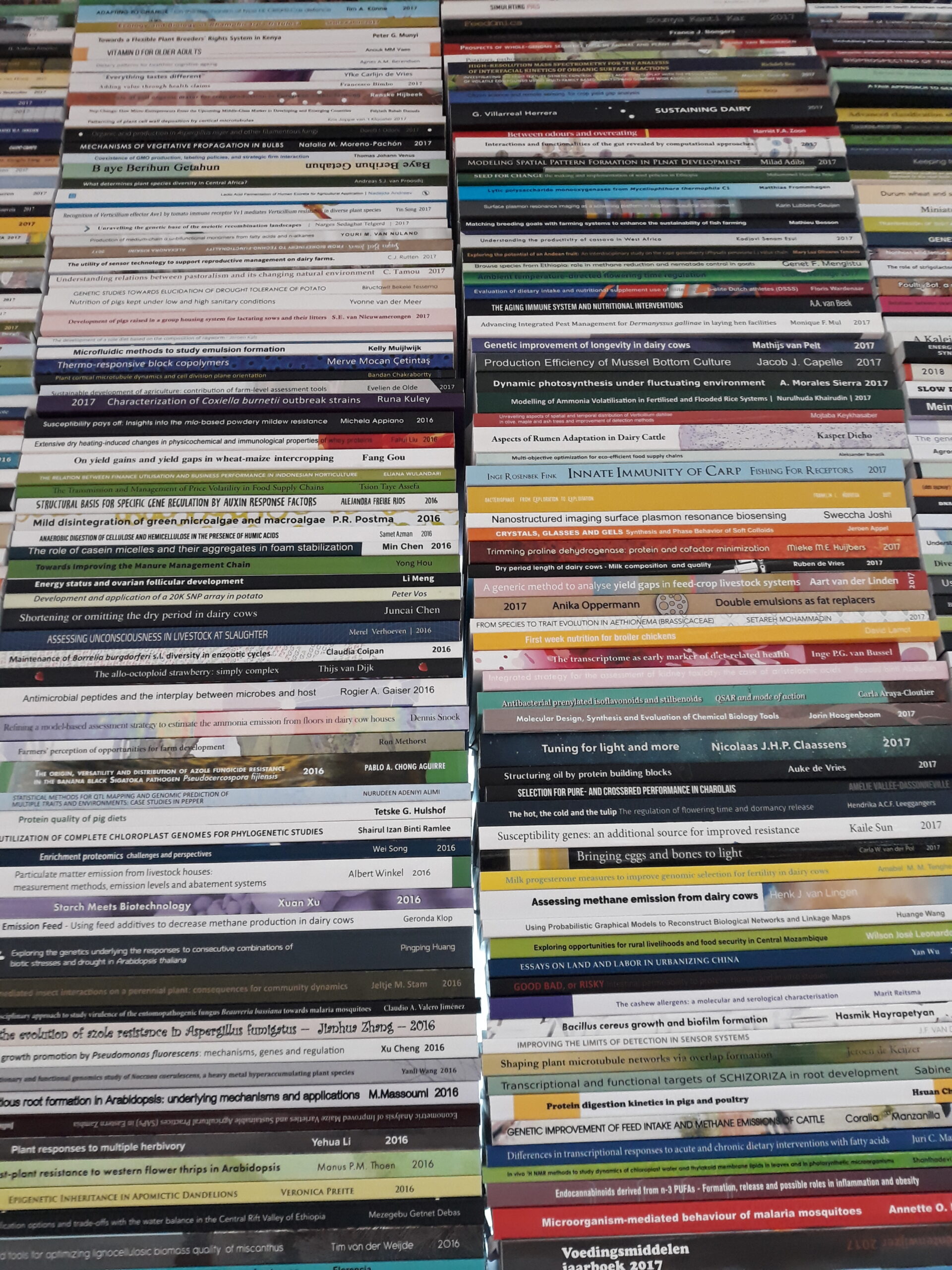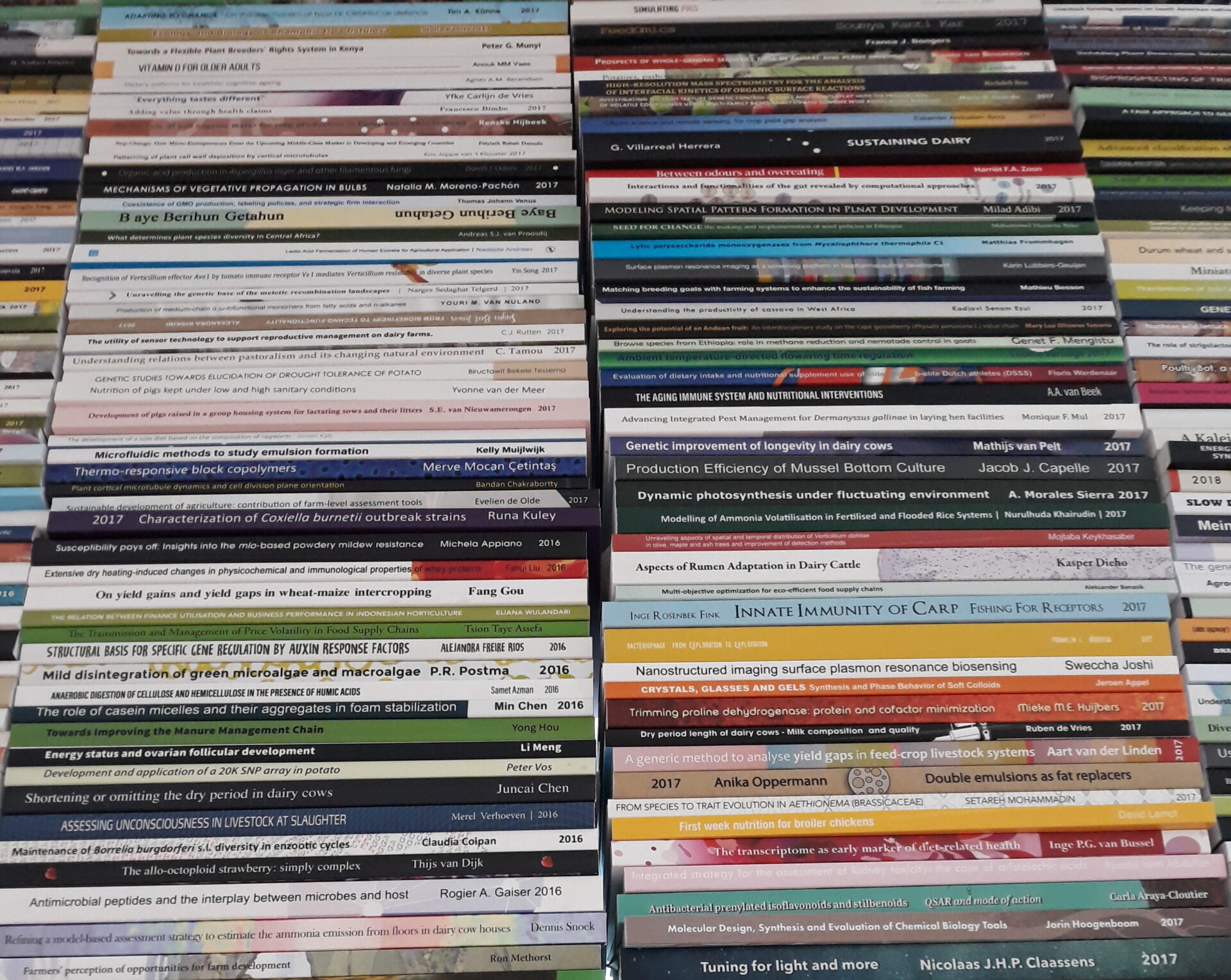Text Arno van ‘t Hoog
The European Commission recently scrapped the proposal to halve pesticide use by 2030. But the wish to drastically reduce pesticide use remains. Scientists from various disciplines have come up with solutions, from the ‘convertible roof’ to strip cultivation or organic substances. But in practice, it’s complicated.
Every year more than nine million kilos of pesticides are sold in the Netherlands. The vast majority of these are fungicides and herbicides, of which 700 thousand kilos are glyphosate. Farmers invest in these products to get good harvests and maintain the quality of their crops. But pesticides leave traces in food, in the soil and in surface water, which poses risks for biodiversity and for farmers and horticulturalists.
The highest number and concentrations of pesticide residues are found in indoor dust samples, as was shown by a recent study by professor of Soil Degradation and Land Management Violette Geissen. She coordinates the European SPRINT project that is studying the ecological and medical risks related to pesticide use.
According to Geissen, the assessment of pesticides by the European assessment agency EFSA does not take into account transport by wind erosion from the field into the immediate vicinity or the presence of residues in household dust. Geissen: ‘There are only norms for residues of pesticides in drinking water, and there are none for air, soil and household dust. We must assess the exposure and its health effects. For example, how much can a pregnant woman inhale in the form of household dust before getting into difficulties?’
Nor is any testing done on the toxicological effect of mixtures of pesticides. ‘We are now doing experiments with the gut microbiome and lung and gut cells, which we expose to pesticide mixtures found in household dust.
There have been lots of developments but they don’t find their way into farming practice
And we look at effects of mixtures in the soil, on the reproduction of earthworms, for example.’ Geissen believes that research on cells and animal testing could eventually deliver new toxicological norms.
Routine spraying
The use of glyphosate and neonicotinoids in particular has been under fire for years, and although the European Commission has withdrawn the plan to halve pesticide use by 2030, research continues into alternatives and ways of reducing the use of these substances. On paper, a lot of progress can be booked through smart innovation. This was shown by Johan Bremmer, senior Plant Health researcher at Wageningen Economic Research, in the 2021 report The Future of Crop Protection in Europe. You can use more resistant varieties and mechanical weed control, or software that helps you apply the right amount of a pesticide at the right moment. ‘This enables you to stop routinely spraying by the calendar, as was usual in the past.’
Some time ago, one of his colleagues looked into the variation in pesticide use between farms, says Bremmer. ‘If the farmers and horticulturalists who use the most started performing as well as those using the least, you might quite easily be able to achieve the 50 per cent reduction the EU wants.
Polarization has made a nuanced discussion almost impossible
You might think: the rest must just make a bit more effort. But it’s not as simple as that, because it has a lot to do with experience, entrepreneurial skills, risk assessment, and weighing up costs and clients’ requirements.’
How farmers think
Bremmer coordinates the EU’s Horizon Europe project SUPPORT, which does research on why agricultural practices lag behind when it comes to using environmentally friendly innovations. ‘There have been quite a lot of developments but they don’t find their way into farming practice. Why is that? That is a crucial question that we’d like to answer so we can advise on how to stimulate the transition to using less pesticide.’
The SUPPORT project studies the farming of eight different crops in 10 European countries, focussing primarily on the human dimension. ‘The underlying discipline is behavioural economics. We look at the role of the family, for instance. Or the influence of advisors, purchasers and consumers. How much scope does the bank allow for investing or taking risks? So we want to get much more of an idea of how farmers think. What influences their decisions?’
At the same time, there is plenty of scope for innovation. This is happening through initiatives like the green crop-protection project Kennisimpuls Groene Gewasbescherming, says Bert Lotz, Applied Ecology team leader at Wageningen Plant Research. Dutch apple orchards, for example, are suffering from about 20 species of fungus that cause rot. So apple farmers spray their crops with fungicide about 25 times in the growing season. Moisture plays a key role: wet weather makes most fungal spores germinate. Lotz: ‘If you can keep the apple tree and the fruit dry, you have a simple strategy for breaking the life cycle of fruit rot fungi.’
Convertible roof
A solution that was developed by WUR researchers at the experimental site for fruit research in Randwijk is a mechanical screen that closes before it rains. ‘The convertible roof works well but there is one fungus, powdery mildew, that goes on growing in dry conditions. You can target that specifically by spraying infected branches very precisely, using much less fungicide. To manage without any fungicides at all, you need apple varieties that are resistant to mildew.’
Another farming system has been developed for lilies. Lily bulbs are currently propagated out of doors and are regularly sprayed against aphids, because aphids can transmit plant viruses, and viruses are an obstacle for export of the bulbs. In the new system, lilies are first propagated virus-free by means of tissue culture, after which they spend their first growing season in the greenhouse, shielded from aphids. Lotz: ‘That gives you bulbs that are theoretically free of plant viruses. After that you only need one more season of outdoor cultivation. And that makes a big dent in the amount of insecticide used.’
There are various options for reducing the use of pesticides, but it is becoming increasingly difficult to have a substantive discussion on the subject, notes Pieter de Wolf, who does research on field crops at Wageningen Plant Research. ‘Polarization has made a nuanced discussion on the usefulness and necessity of pesticides almost impossible. Glyphosate has come to stand for big agribusiness, and all that is toxic, chemical and unnatural. You are either for or against pesticides. If, based on my expertise, I don’t want to rule out any use of glyphosate whatsoever, I get accused of aligning myself with the producer, Bayer. When all I’m doing is using my expertise to provide an estimate of the possible consequences of a ban.’
You can manage with fewer chemicals, but you can’t do without them entirely
De Wolf does not think a ban would be a sensible move at present. ‘It will work against you because farmers will just use other chemical substances, many of which are less effective and riskier for humans and the environment. And the non-chemical alternatives have their disadvantages as well. You can fight weeds with mechanical or thermic methods. But then you badly disturb the soil and use a lot of energy. If you don’t want any more chemicals at all, you won’t stay on track with your climate targets, for instance.’
Don’t rule out
There are various options for reducing the use of pesticides, but it is becoming increasingly difficult to have a substantive discussion on the subject, notes Pieter de Wolf, who does research on field crops at Wageningen Plant Research. ‘Polarization has made a nuanced discussion on the usefulness and necessity of pesticides almost impossible. Glyphosate has come to stand for big agribusiness, and all that is toxic, chemical and unnatural. You are either for or against pesticides. If, based on my expertise, I don’t want to rule out any use of glyphosate whatsoever, I get accused of aligning myself with the producer, Bayer. When all I’m doing is using my expertise to provide an estimate of the possible consequences of a ban.’
De Wolf does not think a ban would be a sensible move at present. ‘It will work against you because farmers will just use other chemical substances, many of which are less effective and riskier for humans and the environment. And the non-chemical alternatives have their disadvantages as well. You can fight weeds with mechanical or thermic methods. But then you badly disturb the soil and use a lot of energy. If you don’t want any more chemicals at all, you won’t stay on track with your climate targets, for instance.’
Disappointments
De Wolf is a project leader at the Farm of the Future in Lelystad, where new farming systems are tested. These include the use of robots and artificial intelligence for identifying weeds and spraying them with herbicide one by one. But the technology doesn’t seem to be sufficiently reliable. ‘A farmer soon finds that he has to keep a constant eye on a robot, and feels he’d be better off just driving a tractor himself. So the equipment gets dumped in a corner of the barn. Disappointments put paid to any enthusiasm for such innovations.’ The key to this technological development lies in smart software, thinks De Wolf. ‘A computer algorithm sees a plant as a different species in each phase of its growth, so it needs thorough training: this is a weed, and that’s a crop. You have to fill the database with photos annotated by humans, and that is extremely labour-intensive. This kind of agricultural technology really needs to be stimulated with a research agenda and targeted financing.’
Another cropping system that is being tested on the Farm of the Future is strip farming, in which crops such as potatoes, wheat, onions and carrots are grown in alternating strips on the same plot. De Wolf: ‘First impressions are that strip farming promotes biodiversity because there is always a crop in the field that provides shelter and food for insects and birds. There is also more opportunity for the natural enemies of pests, and it prevents some plant diseases from spreading as well. But one of the downsides is that we provide year-round food and shelter for mice this way. The Colorado beetle flourishes as well, because it survives the winter in the soil. So you find some problems become easier to manage, while others actually get bigger. The lesson so far is: you can manage with fewer chemicals, but you can’t do without them entirely.’

 Farmers protested against agricultural measures outside the European Parliament in Brussels in February. A few days later, the European Commission withdrew the proposal to halve the use of pesticides by 2030.
Photo ANP/ Jonas Roosens
Farmers protested against agricultural measures outside the European Parliament in Brussels in February. A few days later, the European Commission withdrew the proposal to halve the use of pesticides by 2030.
Photo ANP/ Jonas Roosens


